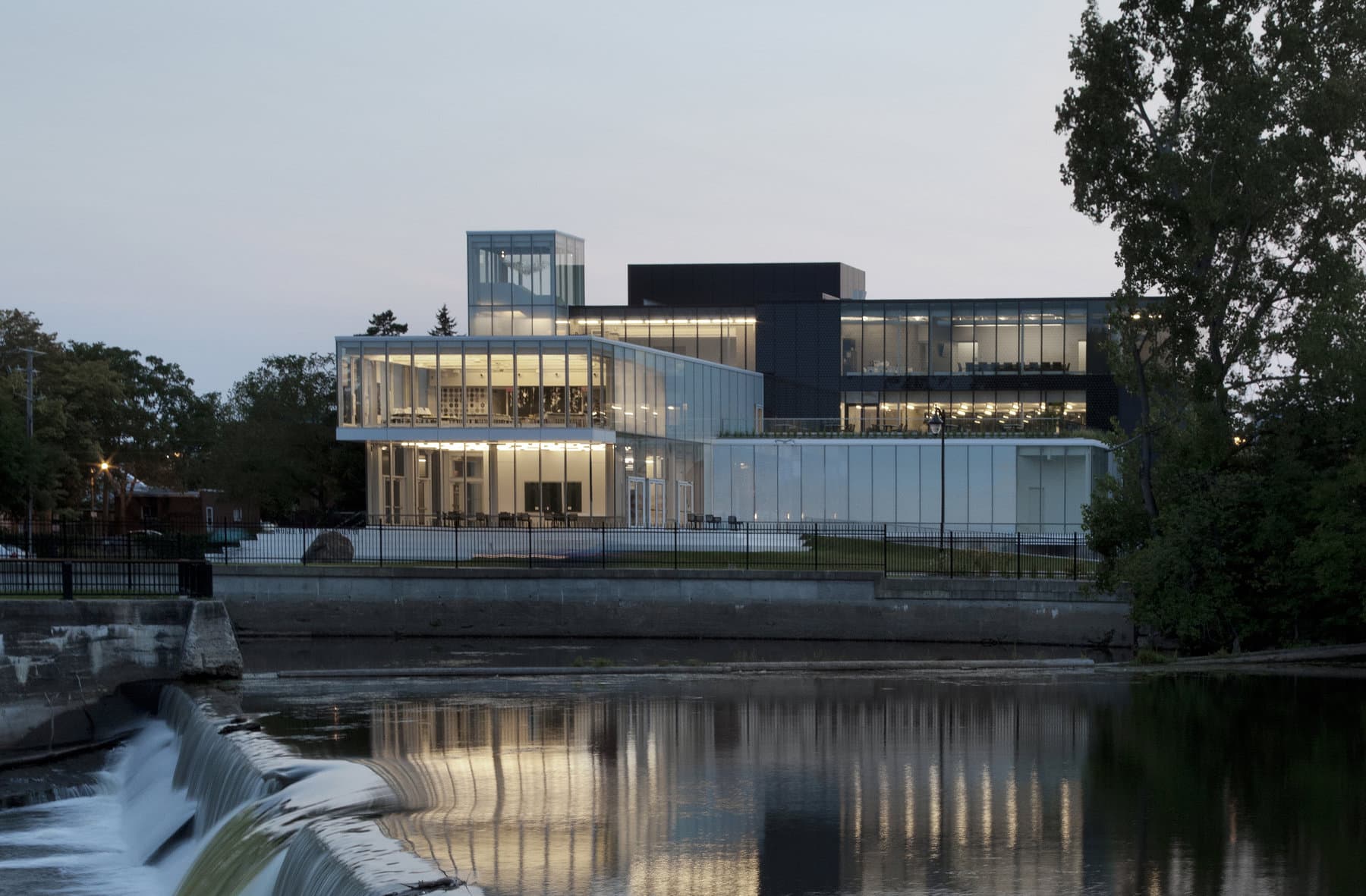About —
The twenty-three murals that adorn the vaulting over the nave, the transept and the choir are typical of Ozias Leduc’s style. Painted between 1892 and 1894, they represent the Mysteries of the Rosary and eight Scenes from the Life of Christ. The cycle is the first commission ever received by Leduc.
In an effort to bring to the public’s attention this exceptional cycle of paintings by the most famous painters of religious subjects in Canada, the MAJ in conjunction with the Conseil régional de développement de Lanaudière [Regional Council for the Development of Lanaudière] and the organizing committee of the Centennial Celebrations of the Diocese, are providing a permanent interpretive service based on the research of Professor Laurier Lacroix, the foremost scholar of Ozias Leduc. Lacroix’s research has been the subject of a bilingual publication.
About the Cathedral of Joliette
The Cathedral of Joliette was designed by the Montreal architects Maurice Perrreault and Albert Ménard. It was built from 1887 to 1889. During the years that followed it underwent many repairs. In 1891 the steeple revealed certain structural weakness and had to be reinforced. Though the undertaking was successful, the steeple was subsequently toppled by a tornado. Falling on the roof, it damaged part of the nave. It was only in 1906 that the cathedral was reopened to the public.
Originally the Church of Saint-Charles-Borromée, it became a cathedral in 1904 when Joliette, hitherto part of the Montreal archdiocese, became a diocese by Vatican decree.
The exterior of the cathedral is in the Neo-Romanesque style while the interior with its rounded arches, barrel vaults and Corinthian capitals draws on the Byzantine. In addition to Ozias Leduc’s Mysteries of the Rosary and Scenes from the Life of Christ, the cathedral is home to another treasure: the Fourteen Stations of the Cross by Georges Delfosse of Mascouche.
Biography —
Ozias Leduc was born in Saint-Hilaire de Rouville in 1862. He began his artistic career in 1883 as an employee of the T. Caril statuary workshop in Montreal. Three years later he became an apprentice to Giovanni Vitale Capello, a prolific church decorator, and in 1889 he apprenticed to Adolphe Rho. Soon thereafter, he receives his first big commission: the decoration of Joliette’s cathedral. In 1897 Leduc travelled to Europe Immersing himself in the work of the Symbolist and the Impressionist. Their influence will be soon evident in his paintings. In 1924 he was commissioned to decorate the church of Saints-Anges-Gardiens in Lachine. He carried out the work with the help of a partner and several apprentices, amongst whom Paul-Emile Borduas. In the course of his career, Leduc worked in Quebec, Nova Scotia and the eastern United States, decorating a total of more than thirty churches and chapels.
Though very well known for his very large religious works, Leduc is just as known for his secular easel-paintings. His portraits, still-lifes and landscapes are bathed in a soft and warm light, which lends them a very intimate quality. As an artist, but also as a poet and an intellectual, Leduc had a considerable influence on such avant-garde artists as Paul-Emile Borduas and Jean-Paul Riopelle. In 1938 he was the recipient of doctorate honoris causa from the Université de Montréal. Ozias Leduc died in Saint-Hyacinthe in 1955.










